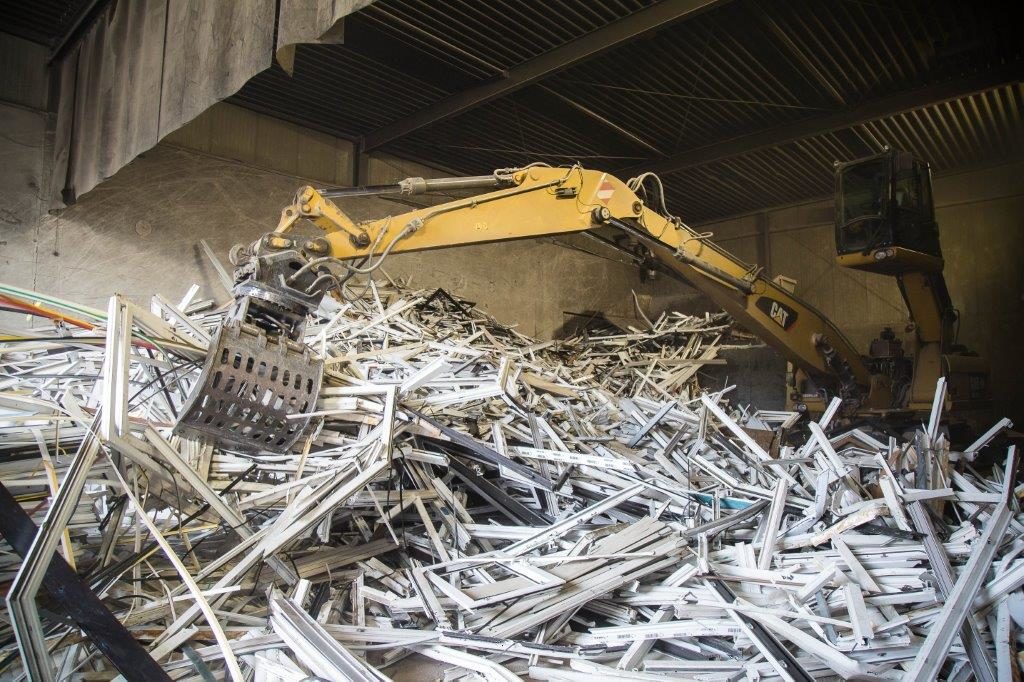The K 2019 trade fair for plastics and rubber will take place from 16 – 23 October 2019 in Düsseldorf, Germany, where the VDMA Plastics and Rubber Machinery Association will shine the spotlight on the recycling sector and show how closed loops can work effectively. A series of interviews is shedding light on why it is doing this and the significance of the „Circular Economy“ for member companies of the association. In this interview, Jörg Frömming, Sales Manager at Dekura GmbH, will give his views on the subject.
Since 2001 there has been a voluntary commitment of the European PVC industry concerning recycling of waste. How well does it work?
Frömming:
The commitment was the response of the industry to public criticism of this material. In view of windows, I can only say that the voluntary commitment has resulted in recycling of 88.5 % of all old windows registered and available. In Germany, we have a functioning recycling loop for PVC scrap windows and shutters.
Does that mean at Dekura you are a pioneer as recycling specialist for PVC scrap windows?
Frömming:
Rigid PVC for windows is really often seen as role model. This niche in the PVC market already includes all phases necessary for a cycle: There are collections systems, there are products that can be turned into recyclates and there is a competitive market for raw materials. Moreover, as for the environment, we have a very good CO2 balance. If you compare the CO2 footprint of a PVC recyclate from the Dekura production process with a new product, the PVC recyclate generates only 12 % of emissions a new product produces.
Does Dekura get enough scrap windows?
Frömming:
We get old windows from two different sources. Firstly, from window makers who remove old windows from buildings in order to install new ones, and secondly, from disposal companies which sort out scrap windows from construction waste. We recycle a total of about 50,000 tonnes of scrap windows and the production waste we get from profile extruders and window makers. We convert these into around 35,000 tonnes of recyclate, the major part of which is reused for producing window profiles.
However, PVC is and will remain a plastic material and consequently suffer from a bad image.
Frömming:
Of course, as a member of the plastics industry we will be affected by the bad image in general. But so far, this has not had any direct impact on our industry. Rigid PVC has undisputable advantages for window construction. It is durable, very shock-resistant and, moreover much more heat-insulating than alternative materials such as metal, for example. The benefits of the product predominate. And the consumers understand this. But we also want to do something to improve the image of plastics. We want to participate in the public discussions by showing what is already possible today in circular economy.

Which role does product design play for recyclability of PVC windows?
Frömming:
In order to achieve a high recycling rate the product must be conceived in such a way that it can be separated and recycled with currently available separation systems. There are some plastics where this is more difficult, for example, black plastics. The windows sector also uses materials that are more difficult to separate for recycling, for instance glued-in panes. Ideally, individual components of a window should come apart easily when shredded. This is one of the requirements during product design. Secondly, the design must allow for recyclates to be integrated in a product. As a rule, such recyclates are not as consistent as new goods, for this reason the product must be designed in such a way that even sub-optimal material can be included.
And is this the case with present PVC windows?
Frömming:
The windows are designed to allow for recyclates to be inserted in the inner core of the window profiles. Almost all window manufacturers meanwhile use this technique, at least Germans do. One layer of new material is applied to the outer side of the window profiles so that the product is optically identical with virgin material profiles. The mechanical and process-related properties of the recyclate are identical with the specifications of new products, so they are perfectly suited to serve as inner core. In order to achieve the optimum insertion rate and quality we also work closely together with system providers, i.e. processors. The window system Synego from Rehau is such an example. Their profiles from high-quality plastics are fully recyclable and have a core made from recyclate derived in a closed value-added cycle.
Are there already recyclates of the same quality as virgin materials which could be used to produce complete windows?
Frömming:
Currently, no really high-quality PVC is generated in a recycling process. But the question still is what effort you are prepared to make to achieve which benefits. Until about 15 years ago, nobody could imagine that it would be possible to reuse scrap window recyclate. The question is, whether it is reasonable to put a lot of development work into producing really clean recyclates that could be used to manufacture a complete window profile. The development and application of these technologies would be too complex, probably making the old-window recyclate so expensive that we could not use it for financial reasons. If it were a political will to manufacture windows from recyclates alone, politics would probably have made it mandatory. But even then you would not have a strong lever for raising the recycling rate, considering the high current recycling ratios in the windows industry. Our industry is taking a middle course. We have a high recycling rate and at the same time the recyclate is used in an economically useful manner.
What positive effect does Dekura expect from its commitment in circular economy at K 2019?
Frömming:
We have a very limited market. We hope to make our market more visible throughout Europe and to gain a stronger position in other countries by supporting circular economy. Not only in markets for “old window” as a resource but also as in those for recyclates.
About VDMA Plastics and Rubber Machinery
More than 230 companies are members of the association, covering more than 90 % of the industry’s production activities in Germany. 10 % of its member companies come from Austria, Switzerland and France. The German member companies represent sales of EUR 7 billion in core machinery and EUR 10 billion including peripheral technology. Every fourth plastics machine produced in the world comes from Germany; the export rate is 70 %. Ulrich Reifenhäuser, Member of the Management Board of the Reifenhäuser Group, is the chairman of the association.
